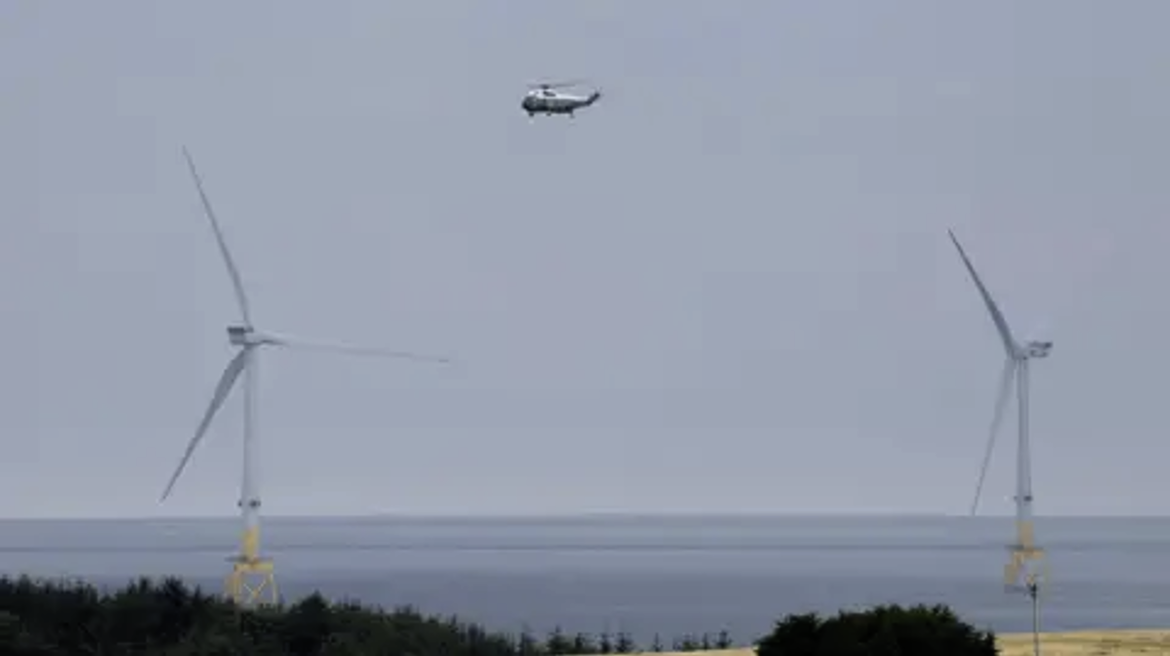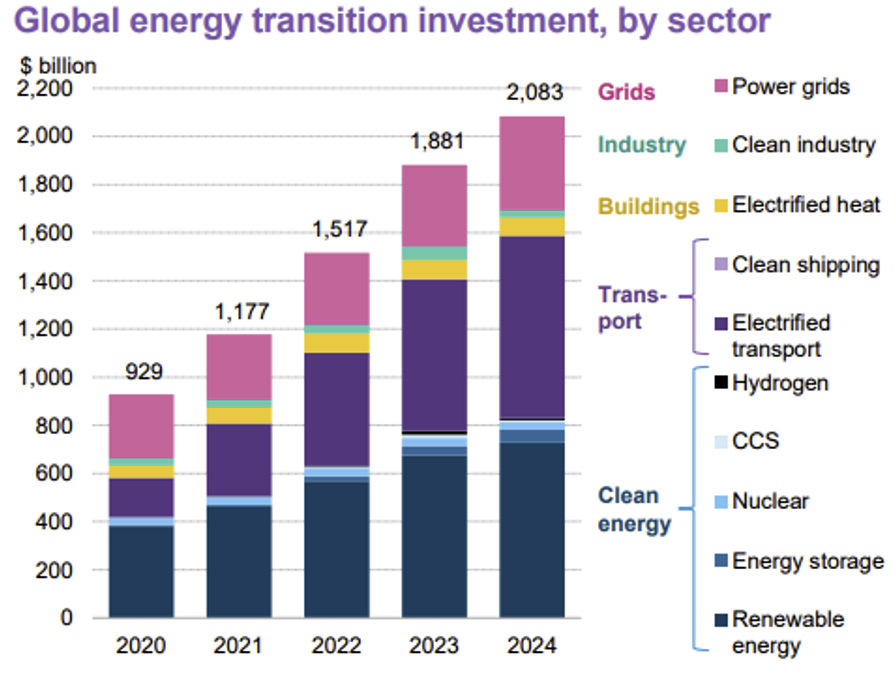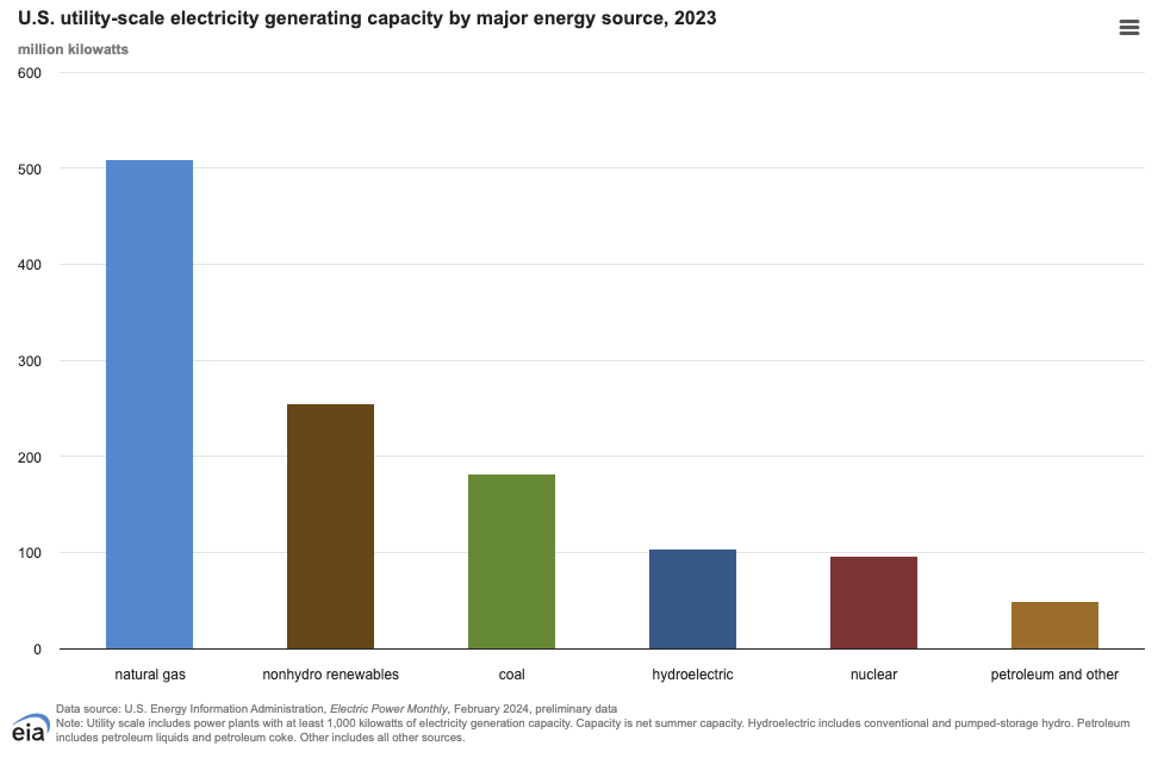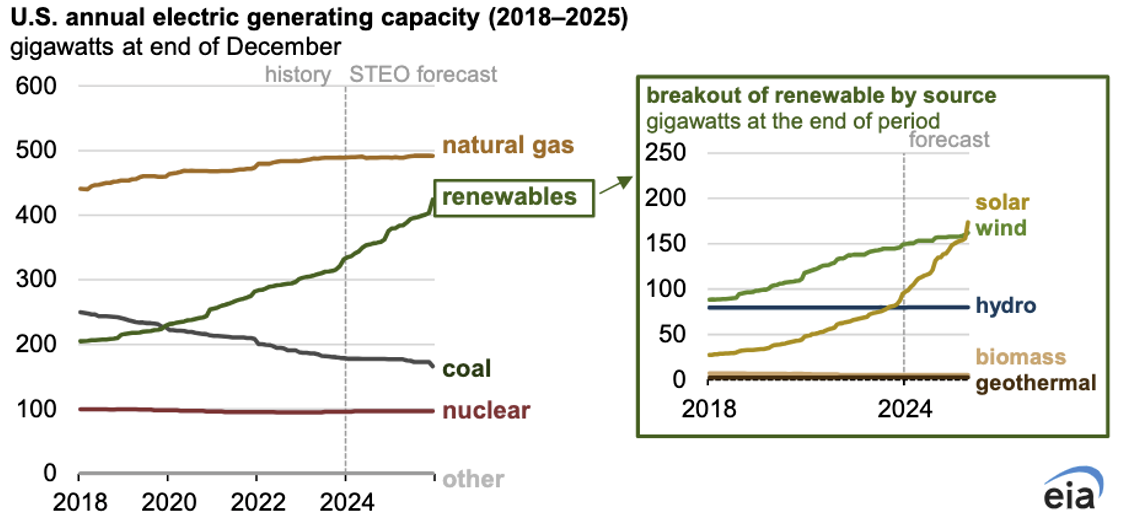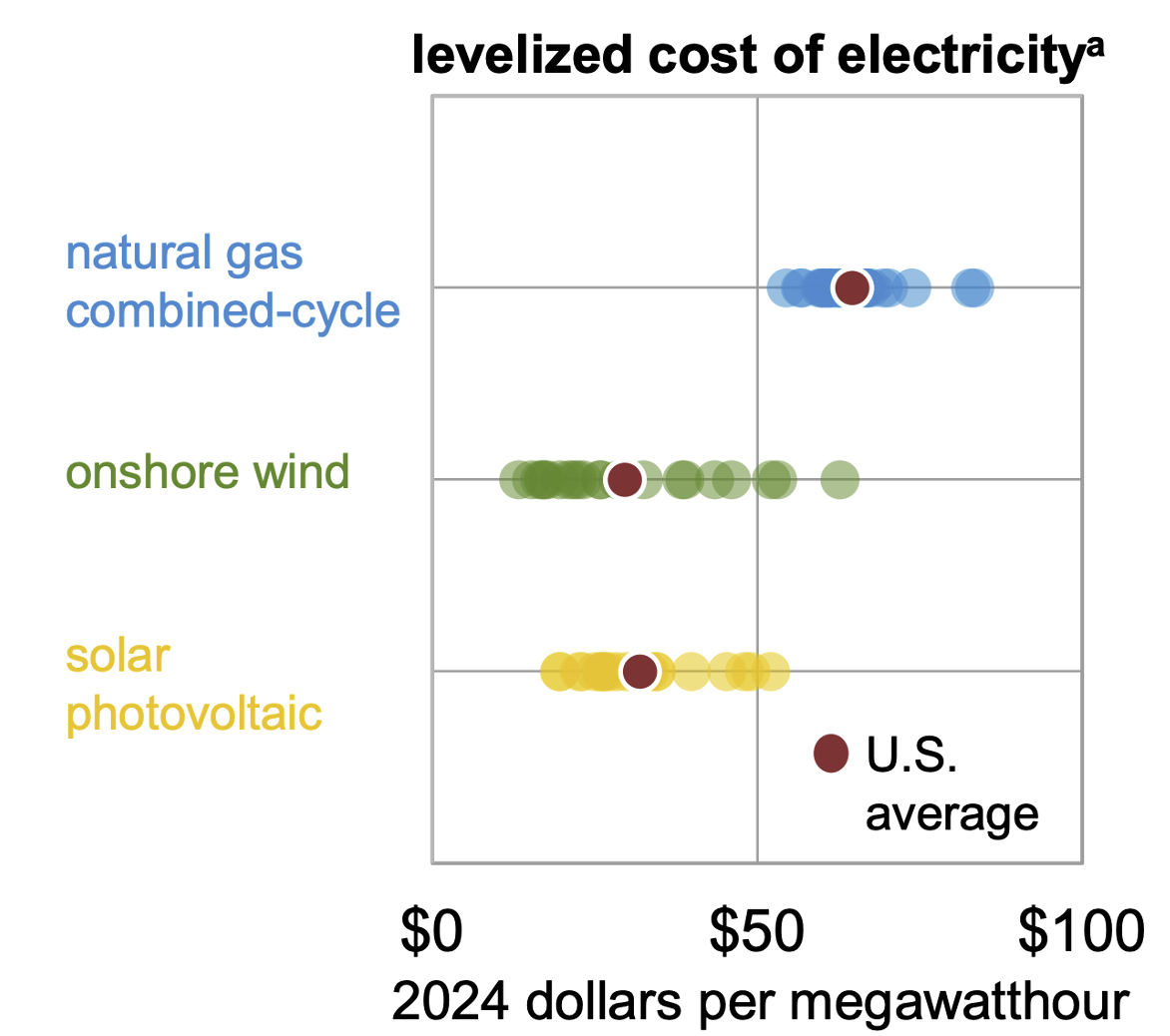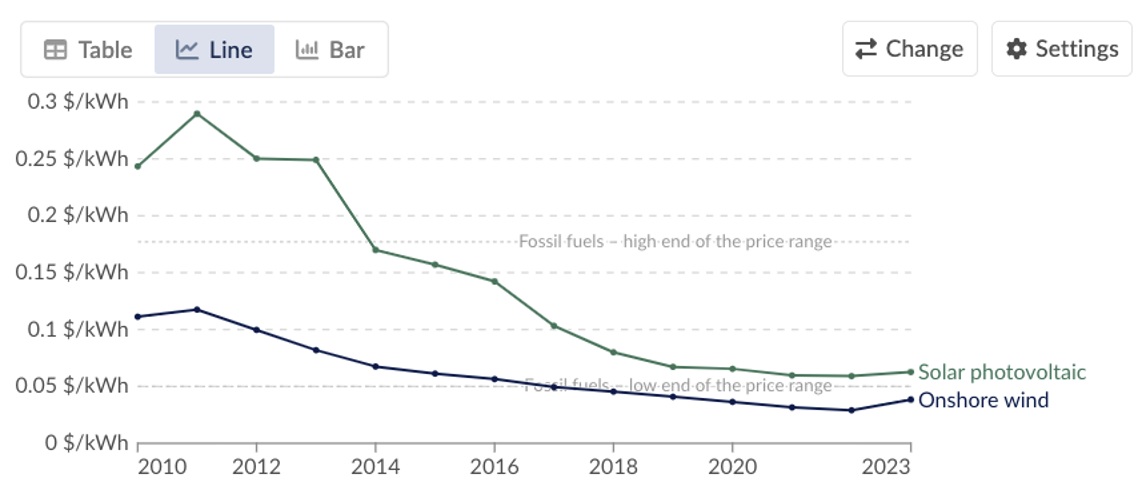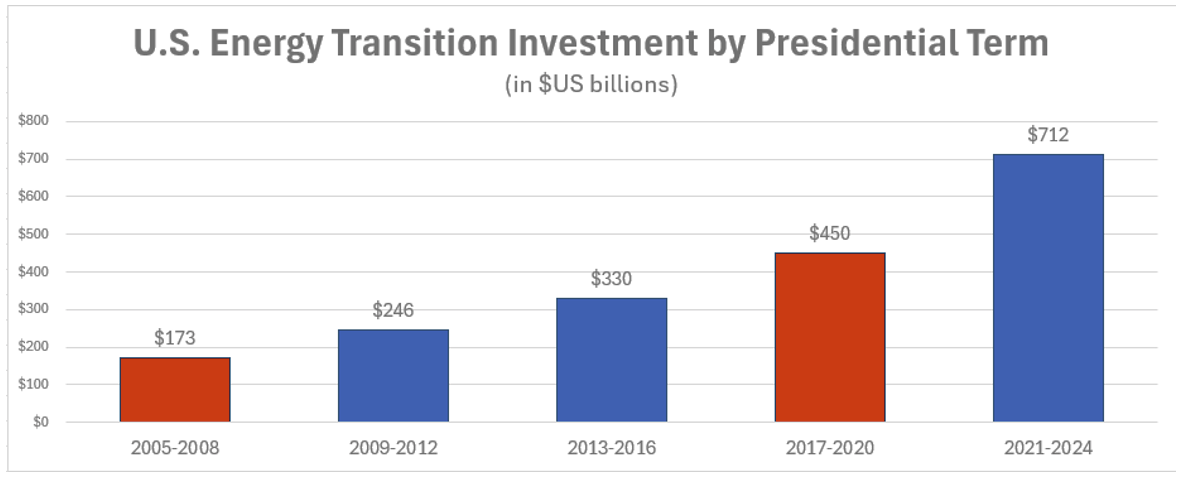Editor’s Note: Today, we’re sharing a lightly edited excerpt from our August edition of Wide Moat Confidential, our premium, small-cap research service. As Brad shares below, President Trump isn’t a fan of alternative energy from wind turbines. That distaste has shown up as administration policy. But as Brad also shows, the fundamental growth of this industry is too compelling to pass up. And while oil and gas aren’t going anywhere, solar and wind could help “fill the gaps” from surging data-center energy demand.
In November 2014, I found myself sitting in an office overlooking a beautiful stretch of the Scottish coast. Through the window, you could faintly hear the crashing of the North Sea onto the white sands. Beyond that, rolling dunes and a manicured golf course.
I’ve seen a lot of beautiful properties in my day, and the golf links at Aberdeen are certainly up there.
Source: Brad Thomas/Wide Moat Research
But I hadn’t made the trip for the view or for a round of golf. I was there to talk to the man sitting across from me, a man who would be elected president of the United States in two years’ time.
In the summer of 2015, Donald Trump would descend that escalator, announce his intention to seek the Republican nomination, and alter the course of American politics forever.
But that was still to come…
At the time, he was “just” a business owner and real estate developer. I was conducting research for my book, The Trump Factor, which sought to catalogue and value the Trump real estate empire.
As we talked, he commented on how beautiful the property was. I agreed. He told me about all the work and planning that went into developing and maintaining the property. I said it showed.
As far as Trump was concerned, there was only one fly in the ointment – the wind turbines a few miles off the coast of the property.
He railed against them – how they killed local birds, hurt tourism, and generally ruined the aesthetics. A few years prior, he had tried to stop their construction through the courts.
On that count, Trump didn’t get his way. The turbines are still there, to the continued frustration of the now-president. Even when he visited the property last month, his old nemeses were there to greet him.
Source: Reuters
Trump hasn’t changed his mind about wind turbines, as he has made abundantly clear just recently:
Source: Truth Social/@realDonaldTrump
The president’s distaste for alternative energy sources like wind and solar (but mostly wind) has carried over into administration policy. And unlike under the Biden administration, they’re not finding many supporters in the White House these days.
But all this is concealing some advantages that the industry still has going for it.
Relative to oil, gas, and nuclear, alternative-energy infrastructure is relatively easy to put in place. And it can be done in a fraction of the time. These energy sources are also becoming cost-competitive with (or even cheaper than) traditional energy sources. And while they are intermittent (which is why pairing them with battery storage is essential) alternative energy is essentially limitless.
Finally, and perhaps most importantly, the world is staring down the barrel of surging energy demand over the coming years. Oil and gas will continue to be an important part of the world’s energy mix for the foreseeable future, but this also isn’t the time to be picky.
Any cost-effective energy source is worth pursuing.
The Case for Alternative Energy
For whatever reason, wind and solar energy have become a political hot potato over the years. The Biden administration was highly supportive of these energy sources, while antagonizing the oil and gas industry. The new Trump administration, meanwhile, rolled back some of the benefits to the alternative-energy space while embracing oil and gas.
But the result is that, to many, these energy sources are treated as an either/or proposition.
Here’s the reality – you can (and probably should) have both. In fact, the world does. In all likelihood, it will for the foreseeable future.
And looking at the numbers, there’s plenty of reason to be optimistic for the alternative energy space.
According to Bloomberg, global investment in this part of the energy market hit a record $2.1 trillion in 2024. That’s up 11% from a year earlier. This figure has also more than doubled since 2020.
Source: Bloomberg
Renewable energy infrastructure is forecasted to require more than $10 trillion of investment through 2050. Meanwhile, U.S. electricity consumption is forecasted to double to more than 8,000 terawatt-hours by 2050.
Trillions of dollars of capital investment will be required to fund the energy infrastructure of the future. And as shown below, renewables already play a prominent role.
Source: Energy Information Administration
What should stand out is that natural gas remains the primary source of U.S. electricity generation. That’s not expected to change any time soon. But, contrary to what you might believe, nonhydro renewables are already the second-biggest contributor to American electricity generation.
And what has me most interested is the growth prospects going forward. Have a look at the next chart.
Source: Energy Information Administration
The Energy Information Administration (“EIA”) expects electricity generation from natural gas and nuclear to remain flat over the near term (coal is expected to continue to decline). It’s only renewables, specifically wind and solar, that will grow over the next two years or so.
And I can sum up why in a single word: speed.
New gas-fired generating capacity is not expected to be available at scale until 2030 and beyond. Nuclear energy is having a resurgence as a likely contributor to electricity production. But, as you might imagine, new nuclear facilities take some time to develop.
For instance, the Vogtle Unit 4 commercial nuclear facility in Georgia made headlines when it opened for operation in May 2024. But an important detail: The plan was announced all the way back in 2006.
The Trump administration has announced several executive orders to speed up the rollout of new nuclear capacity. But that likely won’t change the fact that progress on new nuclear facilities will be measured in years or even a decade-plus.
Meanwhile, solar, wind, and battery storage are the only sources of new electric capacity that can be built in less than two years:
-
Nuclear (New Build): 10-plus years
-
Gas-Fired: Five-plus years
-
Nuclear (Restart): Four-plus years
-
Solar: Roughly one and a half years
-
Battery Storage: Roughly one and a quarter years
-
Wind: Roughly one year
This will, of course, vary depending on local regulations around the new installs. But, on average, wind and solar can be spun up relatively quickly.
That’s well and good. But you might assume renewable electricity is more expensive. That’s not necessarily the case. When looking at the levelized cost of electricity (“LCOE”) – which accounts for all costs over the lifetime of the power-generating asset – renewables come out ahead.
Source: EIA
If all that’s surprising, I wouldn’t blame you. That’s because it’s a relatively new phenomenon, as the next chart will show.
Source: Our World in Data
Renewable energy is cheaper and faster to market. That makes it an ideal energy source to achieve near-term growth in the U.S. in the least inflationary manner.
Cheaper generation means cheaper energy, and although many factors go into the final price consumers pay (for example, expenses such as wildfire mitigation can increase prices), renewables can help lower consumers’ costs.
Ignore the Politics
Above, I said that renewables have become a bit of a political football. And that has shown up in the policies of recent administrations.
Under the Biden administration, the Inflation Reduction Act (“IRA”) included several tax credits and incentives for wind and solar (including residential solar installations and electric-vehicle credits). Well, when Trump signed the Big Beautiful Bill (“BBB”) in July, he rolled back many of those incentives.
But if you take nothing else away, just know this: None of that matters.
As I just showed, the LCOE and time-to-market factors favor wind and solar over the long term. Removing some of the incentives in the IRA might have hurt some of the weaker players (especially those in the residential solar space). But this industry can stand on its own two feet.
Just look at the numbers…
Source: HASI/Wide Moat Research
Investment in renewable-energy infrastructure has continued to grow through both Republican and Democrat administrations. That includes the first Trump administration. And judging by the data from EIA, that doesn’t look to be changing for 2025.
Solar and battery storage will account for 81% of new electricity-generating capacity in 2025. Including wind projects, the share of new power capacity that’s expected to come online in 2025 from renewables and batteries jumps to 93%.
Politics is what it is. But the fundamental growth of this industry is too compelling to pass up.
Regards,
Brad Thomas
Editor, Wide Moat Confidential
|


